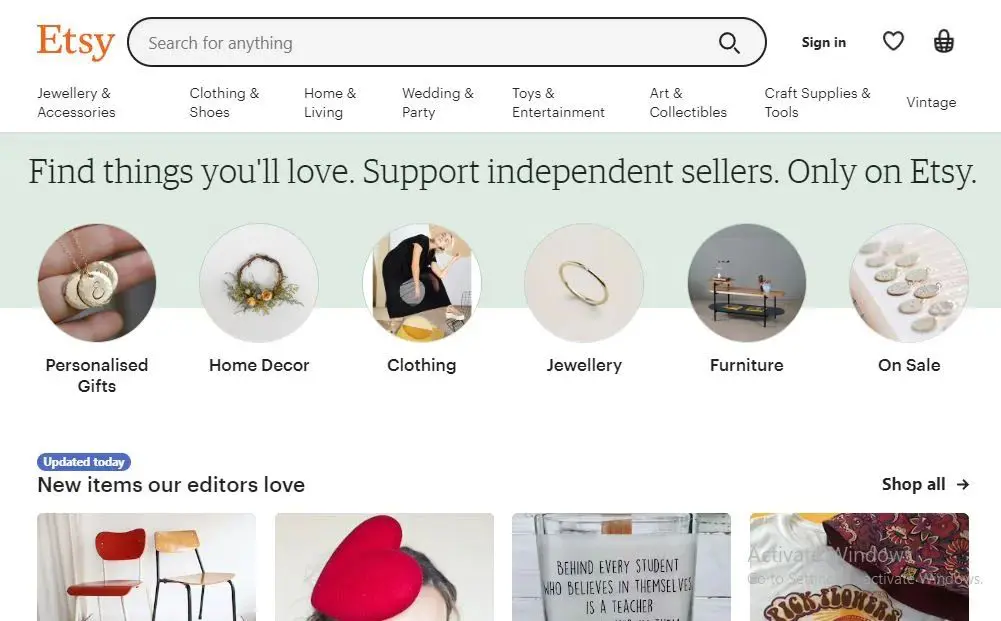Starting a new business is all about problem-solving. Identifying the right problem is what will separate you from the masses. The question of which to build first, the product or the market, is a chicken and egg situation. Many marketplace startups fail to grow their business because of this problem. New entrants in the market are unaware of the challenges they could face, hence, it fails. Let’s learn how to face a chicken and egg problem and pave your road for brand development.
What Is the Chicken-And-Egg Situation?
A chicken and egg problem or as we like to call it, a chicken and egg situation is a metaphor used for a dilemma where a business doesn’t know whether to build sellers or buyers in the market first. It is often known as a cold start problem. In this situation, if there are no sellers to fulfill the demand of your buyers then your product fails.
Now, what if there are no buyers? Then no sellers would agree to sell your product. Quite mind-boggling isn’t it? As much as it sounds like a rarely occurring situation, it is something that happens a lot with startups and most of them are not well acquainted with this problem. Maintaining equilibrium between supply and demand is the biggest challenge a business could face and it makes many new businesses fail at the initial stages.

Chicken and Egg Problem Examples
We have some scenarios for you that will help you better understand the chicken and egg situation.
Suppose you create software that is unique and functions for the benefit of businesses. For that software, you need vendors who can provide your services to the clients. But to convince vendors of this act, you need to convince your target audience first. But the audience won’t buy your idea until you assure them about the availability of vendors. There it is! a chicken and egg problem where you don’t know whom to convince first to run your business.

This problem mostly occurs in e-commerce startups as they are a virtual marketplace where you have to take on-board both buyers and sellers. Many huge names have been through this problem, like Uber, Instagram, Flipkart, eBay, etc. All of these companies used smart strategies to help themselves develop their business and overcome a chicken and egg situation.
How to Solve a Chicken and Egg Situation for a Startup?
Now that you know about this situation you must be wondering how to solve it. It sounds too difficult to solve a puzzle like this but don’t worry Hapy Co has a solution for every business-related problem. We have some strategies for you that will provide you with a chicken and egg problem solution.
- Start Small, Select a Niche
- Try to Grow both sides together
- Keep a Stable Pace
- MVP
- Don’t Make Huge Claims
- Promotions/Discounts
- Differentiate from Competitors
- Take input of your team
- Use SaaS Tools
- Make it exclusive
1- Start Small, Select a Niche
The best thing to do in a marketplace where you have to choose between building buyers and sellers first is to choose a small and specific niche. Do not start with a huge customer segment or high-end suppliers. As you are new in the market, attract those small suppliers who can grow their business with your help. Similarly, choose a small target audience but the one which can benefit the most from your offerings.
The Case of Quora
Let’s look at the example of Quora a renowned website. When Quora kicked off, it focused on a specific niche. They invited all the big tech names to participate on their platform and ask questions. This helped it to gain a lot of fame and youngsters started using it to get answers to their questions related to computer sciences, tech, entrepreneurship, etc. Eventually, Quora became a popular platform and it built a community that participated on its platform.
2- Try to Grow Both Sides Together
After doing market research, when you have identified specific buyers and suppliers, it’s time to grow both sides. How are you gonna do that? Well, you have to create an equilibrium between them first which is not hard for a small business.
When the products will be delivered on time with full quality to your customers, the demand will automatically increase. And you have to assure them that you will be able to fulfill their demands. But don’t overstock on the supply of products. Calculate the growth on the customers’ side then create more suppliers in the marketplace.
The Case of Tinder
Take a look at what the most famous dating app Tinder did when they faced a problem to get both men and women interested in their platform. It was a unique problem as they had to make both genders active on their app to grow their community. The Co-Founder of Tinder, Whitney Wolfe first went to women and showed them how it’s a fun and useful app. Then she marketed her product to men with the perception that it is filled with many girls registered on the app.
She would make sure that when she pitched her app to people, they would register on it. That resulted in a big number of registered users on the app within just the initial days of Tinder’s launch. That’s how you grow both stakeholders of your platform together.
Learn More About: Usability Testing Benefits
3- Keep a Stable Pace
A lot of new businesses are in a hurry to grow their business and earn a huge amount of revenue. Developing your brand is a complex and slow-paced process. You can dream big but to achieve your dreams you have to learn patience.

If you are encountering a chicken and egg situation, keep a slow pace of growth, Start by taking small steps, make strategies for each step, review your business plan, and try to innovate. Focus on the weak points, if you think your sellers are a weak link then work on them before building a huge demand for the product. Make projections of your growth and show them to both sides to keep attracting them.
The Case of Etsy
Etsy is the top online platform to connect homegrown artists with art lovers. In the beginning, it wasn’t easy for them to build this platform, as they required both art suppliers and art-loving buyers to get on board. To get one stakeholder on board they need the other to already be there. There it is again, a chicken and egg situation.
Etsy founders used a smart approach to combat this challenge. They hosted fairs across the country to gather the best independent art makers. They pitched their idea to the art producers and convinced them to open their stores on Etsy’s platform. As a result, they already had top-tier artists on their platform and the art lovers naturally followed. This is how Etsy carved out a successful plan against the chicken and egg situation.

4- MVP
Minimum Viable Product (MVP) development is a concept that has benefited many businesses either small-scale or large-scale. Now we have the comfort of testing our business idea first, before launching it into the market. Our analysis says that in a chicken and egg situation, you can use MVP development to solve it.
How can it help you? Well, it’s pretty simple!
You can test your platform by taking feedback from both customers and suppliers and then incorporate it before launching it. It will help you to note the potential audience you can target with this platform. You will not waste your resources on the marketing and development of a service that might not be liked by the end user. This technique is a must for startups. Failure of a prototype is better than the failure of your whole business idea.
Learn More About: MVP development services.
5- Don’t Make Huge Claims
Many startups make huge claims in front of their investors/sellers believing that they could fulfill them if they could get everyone on board. Well, it’s a mistake because it’s just the initial stage and your partners would have high expectations of you from the very beginning.
A failure to stand up to their standards results in a huge loss. So set an achievable goal and show it to both sides (buyers and sellers) to make them realize your potential.
6- Promotions/Discounts
In the initial stages of any marketplace, you have to give out monetary subsidies to vendors and customers to build your audience. This shows that you are offering value to people. Always set a budget for promotions and discounts before the launch.
The more benefits your customers will find in your offerings the more your business will develop. Sometimes companies also make a fake persona around their product that it’s cheap with good quality. This strategy is most successful and helps to build a loyal audience.
7- Differentiate From Competitors
Differentiation is the key to problem-solving in any business. A chicken and egg situation also occurs because sellers do not find a reason to switch to a new marketplace and feel less secure. But this is where differentiation can help you.
Show people that you are bringing innovation to the market and that your offerings are more valuable than your competitors. Decide a plan on how you will differentiate yourselves before implementing the business plan.
Learn More About: What Is Lean Software Development?
8- Take the Input of Your Team
A collaborative working team is the best way to solve a chicken and egg situation. Input from many team members on how to overcome any hurdle in your business plan is crucial. This will help you to bring creativity to the table. Different minds will have several ways to get through this situation. A strong team can make a cooperative strategy that works to eradicate a chicken and egg situation in a two-sided marketplace.

The Case of DoorDash
In the early stages, a marketplace doesn’t have a huge team to support its operations or suppliers to provide a bulk quantity of products. Most of the time, the core team and the top executives do the work at this stage. DoorDash handled this situation very well. They made a policy in which every employee had to make deliveries themselves once a month.
9- Use SaaS Tools
The world is evolving rapidly and there is new technological advancement every day. For the survival of any business, it’s important to innovate. SaaS tools are the latest advancement that is helping businesses these days. We recommend SaaS or cloud tools also as they can get you through the chicken and egg situation.
These tools are a smart investment as they are a means to gain insights, disaster recovery, scalability, and control over the marketplace. If you engage your producers and consumers with a cloud or Saas tool, your whole network will be efficient and it will be easier to keep track of the growth of both sides.
Learn more about: Cloud vs SaaS.
10- Make it Exclusive
Our last strategical tip to solve a chicken and egg problem in two-sided markets is increasing the worth of your platform by making it exclusive. Make a persona around your platform that if suppliers do not partner with it in the early days, they will miss out on a lot of stuff. Some brands use email marketing to engage top suppliers with their products by sending out special invitations. With this technique, sellers find your platform exclusive for them.
How to Make Two-Sided Markets Into One?
Two-sided markets are platforms where buyers and sellers come together to exchange services and products. The two-sided market is expected to grow exponentially in the upcoming years. Alibaba, Airbnb, and Uber are some examples of two-sided markets. You must have an equilibrium between the buyers and producers to keep a steady demand and supply in your marketplace.
Two-sided markets are the ones that most likely face the chicken and egg situation in their early stages. Some businesses solve this problem by being a single player in the marketplace. Instead of getting both sides on board, they work themselves as the suppliers of goods and services. This is how you make a two-sided marketplace into a one-sided one. After they get a certain amount of customers on board, they switch to a two-sided marketplace by allowing sellers to be on their platform. This helps them to manage both demand and supply altogether.
The Case of Amazon
The best example of this strategy is Amazon. Amazon is one of the biggest marketplaces in the world but it started merely as a book retailer. Jeff Bezos started by buying books from other bookstores and retailers then sold those books online on his website. This solved the problem for Jeff as he now had value for buyers in his marketplace. Then he made sellers participate in his platform by allowing them to directly list their products on the platform with the price of their choice.
This is also called a single-player strategy. OpenTable and Flipkart also followed the footsteps of Amazon and used this strategy to create a strong customer base before making their platform a two-sided marketplace.
How Did Uber Solve Its Chicken-And-Egg Situation?
In the initial days of Uber’s launch, they also found themselves in this situation. How did Uber overcome the chicken and egg situation? They focused on the supply side first but also tempted their passenger side with offers.
Uber started with cold-calling taxi drivers and offered them to pay an hourly rate if they try their network. This helped them to build a prominent supply of taxi drivers. But they also incentivized the passengers by offering free rides. This way they attracted users to register with their app and created a huge customer base. That’s how they kept growing on both sides and gained massive success.
Conclusion
The chicken and egg situation is a head-scratching dilemma for some but it’s not impossible to solve. Once you find out how common it is to occur in business you will find easy ways to solve it. Many huge companies have been through this situation and overcame it with their wits. We have provided you with many strategies to use when you find yourselves in the middle of a chicken and egg situation. Growing your business step by step gives you the time and resources to beat challenges in your way.
The initial stages of a business are the tough ones but once you face that, the road to success is easy. We have informed you of the strategies used by many giant marketplaces which helped them to get out of the chicken and egg situation.
Our purpose is to help startups in designing and developing their products in an effective way. Our CTO as a service can help your tech startups to grow faster than others. We hope this blog helped you to get a deep understanding of the chicken and egg situation.
FAQs
How Paypal Solved the Chicken and Egg Situation?
Many times companies built fake personas around their products to create hype. This helps them to attract both investors and customers to their business. Paypal used the same trick by building a bot that purchased things on eBay using Paypal. This increased the popularity of Paypal among people which has made it a huge company now.
Does the Chicken and Egg Situation Occur in the c2c Marketplace?
Yes, this problem also occurs a lot in C2C marketplaces. Take an example of a platform like OLX where users sell their products but in the beginning, when there’s no one willing to sell their product on the website, there will be no buyers coming to that website and vice versa.
What Is Meant by the Network Effect?
Network Effects occur because of marketplaces as they create an environment where if a person enters the network of a market, they not only increase its size but also its value. The more users on a platform, the more valuable it becomes. For example, in online wholesale stores, the more items are available the higher variety for users to select from.



